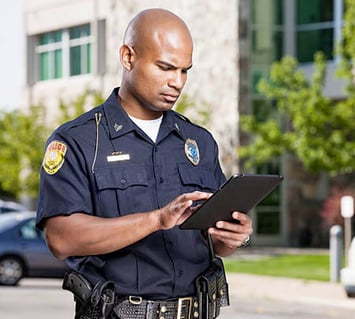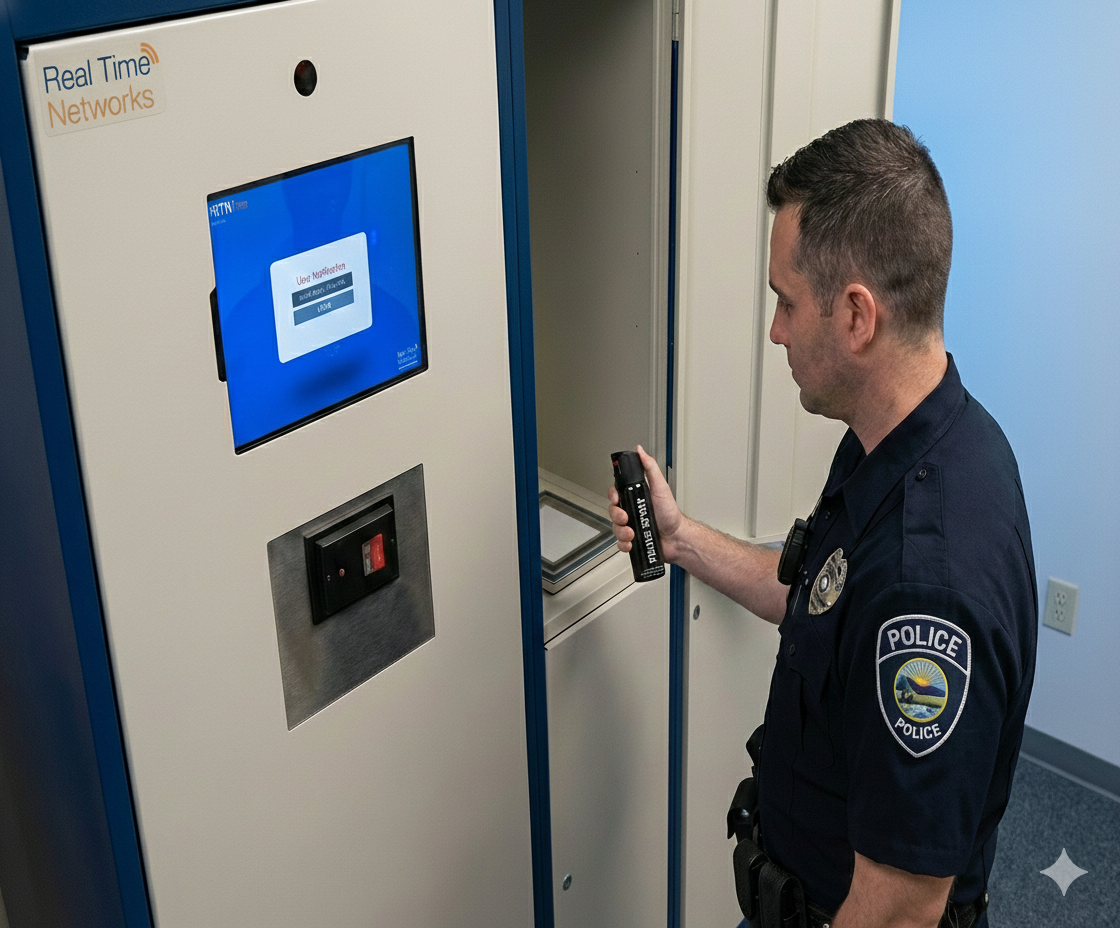By Jay Palter | September 7, 2023
Even in our increasingly digital world, physical keys play an important role in access control. That is because they continue to provide reliable, cost-effective security despite the growing array of alternatives available.
But relying on physical keys has a significant drawback: you need more control over who signs them out, where they go, and what they do with those once they have them. That concern prompted security-conscious organizations across all public and private sectors to design complex and often unwieldy manual key control processes.
Optimizing these traditional key control procedures can yield valuable insights into your organization’s security and operations. Among the most effective tools for optimizing key control is a smart key control system.
This article explores how smart key control systems work across various public and private sectors and how organizations of any shape and size can get the most out of deploying one.
What business benefits do smart key control systems offer?
To state the obvious, physical keys have little value in and of themselves. Their replacement cost is trivial. The actual value of physical keys lies in what they provide access to—equipment and vehicles, sensitive facilities, and your personnel. Key control is the process of managing and tracking physical keys. The goal of key control is twofold:
- To enhance key security
- Improve the efficiency and effectiveness of the workflows in which your personnel use keys.
Smart key control systems provide those benefits and more.
Improved accountability
Smart key management systems automatically generate transaction logs, providing continuous insights into who signed out which keys and when. They also help you set key curfews, which enforce return times and notify supervisors if a staff member fails to return a key by the end of a shift or a custom-set deadline.
Enhanced operations
Smart key management systems broaden your key usage possibilities without compromising security and provide enhanced insights into their utilization. You can limit access to keys by department, job title, or individual. Or by specific times of day or other custom conditions—such as whether a key is the last one available for routine operations. Additionally, workers can reserve keys in advance for specialized vehicles or equipment.
Reduced key loss
Losing a business key incurs both direct and indirect costs. The direct cost is obviously the replacement cost, which is low unless you need to replace a master or sub-master key. In this case, that may necessitate rekeying many locks, and those costs stack up quickly. And then, if your organization operates in a public or regulated private sector, misplaced keys could expose your organization to hefty fines.
Indirectly, missing keys mean lost productivity. Your staff will search for lost keys and manage rekeyings instead of performing their usual responsibilities. If the lost key is the sole copy, crucial equipment or vehicles might remain inaccessible until it's replaced. Labor and production costs creep up unnecessarily.
Better risk management
Relying on manual key management introduces the risk of too much human error in critical security and business operations. Automated key control systems are more reliable. Small mistakes—like a tired worker forgetting to log a manual key transaction or inadvertently taking a crucial key home—add up over time, disrupting work schedules.
Also, in regulated industries, physical key management software can automatically generate access reports, helping you demonstrate compliance with regulatory standards.
How are smart key control systems used in different industries?
Smart key control systems are valuable specifically because of their flexibility. They’re adaptable to use cases across a wide range of different industries.
Casinos & gaming
Casinos are subject to strict licensing regulations requiring them to monitor cash and gaming materials. This responsibility becomes much simpler when you have a dependable method to oversee key usage, specifically for unlocking drop boxes, counting rooms, and other sensitive back-of-house areas. Employing an electronic key tracker eliminates the possibility of human errors in key transactions, which could otherwise leave your establishment non-compliant.
See also: Key & Asset Management Solutions for Casinos

Education
Due to their size, implementing swipe cards or other electronic access controls across college campuses is often not financially viable. Additionally, the constant influx of students, seasonal program staff, and adjunct faculty creates a challenge in managing up-to-date key access control logs. Manually keeping track of all the physical keys in use on busy campuses like this can be a burden. Smart key control systems simplify the process by allowing quick updates for new employees or entire student classes with just a few clicks in the system’s management dashboard.
See also: Key & Asset Management Solutions for K-12 Schools, Colleges, and Universities

Fleets & transportation
Guaranteeing proper access to equipment, vehicles, and restricted areas is essential for safety and better fleet performance. Electronic key control boxes ensure that only authorized individuals can access vehicles. Fleet key management systems also efficiently manage reservation requests for limited vehicle pools, even for medium-sized fleets, can save companies and municipalities six figures annually.
See also: Key Management & Safety Solutions for Fleets

Healthcare
Physical keys are frequently used to secure in-house pharmacies, drug dispensaries, and other medical storage facilities. Keeping a record of key sign-outs and returns can enhance access control for controlled substances and supply the necessary access logs to comply with government regulations.
See also: A Comprehensive Guide to Pharmaceutical Security

Hotels & hospitality
Delivering excellent customer service in part means opening conference rooms, storage cabinets, and other secured items promptly whenever a customer requires them. Of course, that means knowing where the relevant keys are at a moment’s notice, which can be difficult in venues that rely solely on manual key tracking. A smart key control system creates a digital "paper trail" that allows you to trace the movement of any key.
See also: Key & Asset Management Solutions for Hotels & Resorts

Law enforcement & emergency services
Law enforcement agencies frequently opt to use physical keys for access control due to budget constraints or a preference for dependable key security solutions in adverse conditions, including during power or network outages. Including an offline emergency release feature, key control systems maintain key security while preserving emergency response capabilities. Moreover, in cases where keys are utilized for evidence management, the signout report provided by a high-security key system can also aid in tracking evidence chain of custody.
See also: Key & Asset Management Solutions for Law Enforcement

Manufacturing
Manufacturing companies must ensure their facilities stay secure while providing easy access to work areas and equipment. Monitoring the location of keys guarantees workflow efficiency and ensures that the next individual requiring a key can easily locate it. Time spent searching for misplaced keys should be spent on revenue-generating activities.
See also: Asset and Key Management Solutions for Warehouse and Distribution Management

Shipping & logistics
Keeping track of vehicle and storage keys in distribution centers just through manual means is a daunting task. Key control systems automate processes that otherwise can take up hours of your day. You’ll get enhanced control over all transactions in a fraction of the time it would take using manual methods alone.

What are the most important key control best practices to follow to optimize your key control program?
Consider these key management best practices if you are still determining how to optimize your key control program. They’re effective tips for organizations with any level of security needs.
Develop a comprehensive training program
Even the best technology is only useful if your staff knows how and is willing to use it. A robust training program can help them understand how a new smart key control system benefits the organization and simplifies their daily tasks. That leads to greater key availability, accountability, and quicker transactions, making them more productive.
Establish a lock change schedule
In high-security environments, unchanged locks equal risk, so including regular lock changes for any high-value locations or assets is essential. If you provide physical keys to employees without a smart key management system to track them, you might even consider rekeying whenever an employee departs to prevent potential unauthorized duplication.
Use restricted keys to prevent unauthorized duplication
For cases where the risk posed by employees duplicating keys is substantial, we recommend employing restricted keys and locks for valuable assets. Restricted keys have distinct markings and are cut from patented key blanks unavailable to the general public. Although pricier than standard keys, the enhanced control over key blanks adds an extra layer of security.
Plan routine audits of keys and users
No security system is foolproof, including key control systems. Despite minimal human error issues, we strongly encourage always scheduling periodic audits of users, keys, and protected assets. Audits, while time-consuming, are significantly more cost-effective in terms of time and money than unnecessary rekeying.
Optimizing traditional key security systems pays for itself
Streamlining security procedures is a vital business practice. Although key security optimization reaches every corner of your organization takes time, it always pays off. Optimizing your processes using a smart key control system allows you to generate valuable business insights.
To learn more about designing key control programs, check out our "Ultimate Guide to Key Control in the Workplace".
Subscribe to our blog

Jay Palter
Vice President of Marketing & Partnerships




